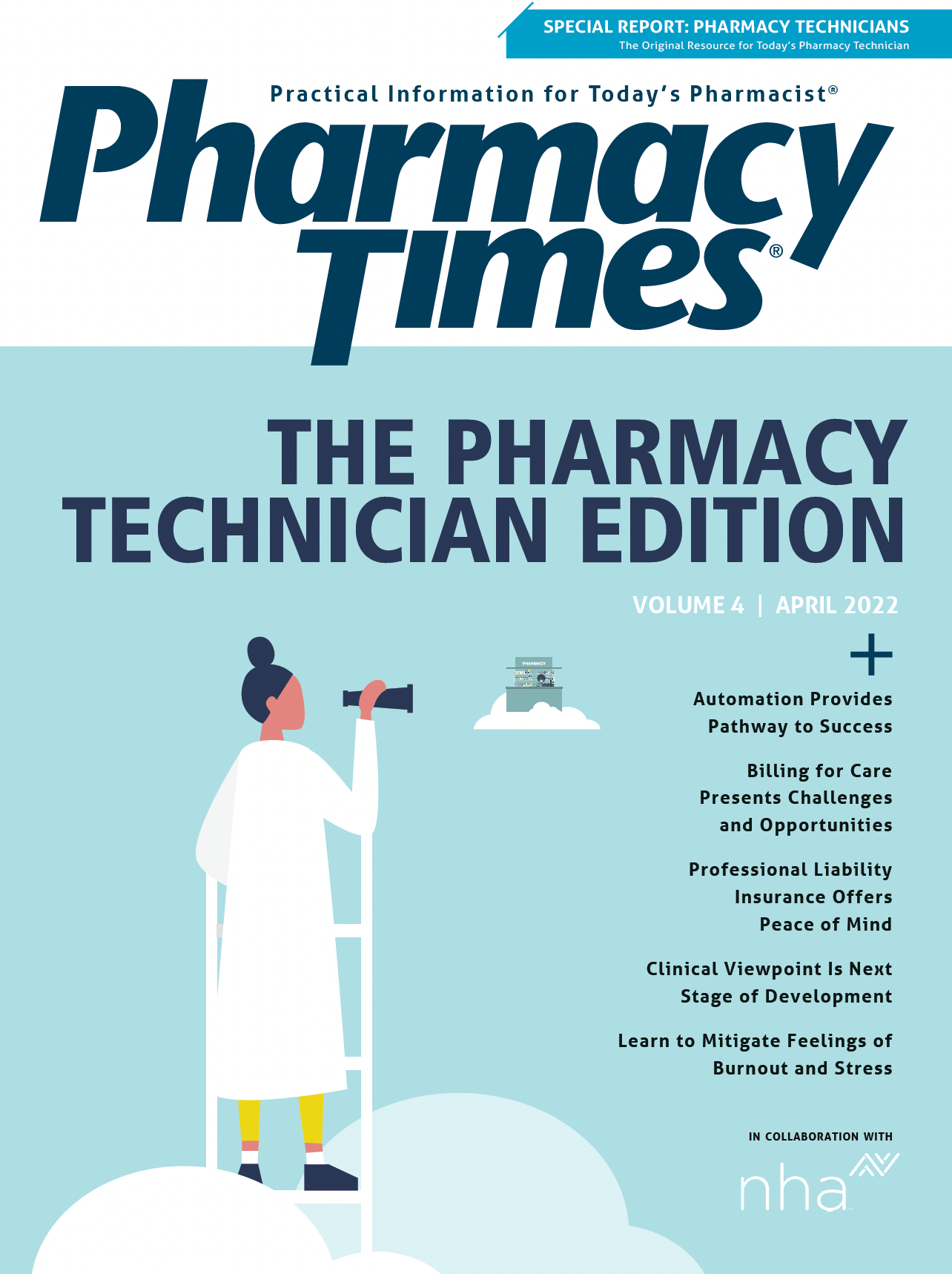Publication
Article
Supplements
Is It a Job or a Career?
Technicians have become so much more essential in pharmacies and to patients than their titles imply.
Technical skills involving attention to detail and implementation of standardized processes are in demand in all sectors, but having people skills as well boosts appeal. There are more than 160,000 open pharmacy technician positions across the country, and the need for dependable, effective professionals who can communicate with patients and organize care delivery will only grow. Technicians' opportunities for development in service skills, leadership, and responsibilities increased substantially during the COVID-19 pandemic, as did the recognition they received.
More Patients With Needs Than Available Provider Time
Before the pandemic, the health care system was overwhelmed by patients with multiple chronic illness needs, as well as poor system coordination and a bureaucratic, overregulated environment that did not allow health care team members to move up. An effective, efficient system allows everyone to use their skill sets fully in care settings. When the pandemic came along, emergency orders nationwide through the Public Readiness and Emergency Preparedness Act allowed pharmacists to order tests and medications. Subsequently, technicians were given responsibilities that looked much like those of medical assistants and patient journey facilitators. Demand for frontline services at the pharmacy exploded almost overnight, and pharmacists soon realized that they could not own the patient journey by themselves.
Evolution of Pharmacy Practice Includes Everyone
As pharmacy pivots from its traditional orientation of buying, filling, and selling medications toward closing care gaps, coordinating drug use, screening patients, and delivering services, every individual working in or with a pharmacy must evolve together. The appointment-based model has become commonplace, proactively scheduling services, with pharmacy staff members queuing and preparing for those visits and following up to ensure adherence. Team member outreach is emerging in such areas as care coordination, notification of service delivery, and even screening for brief intervention, referrals, and treatment. Technology that increases automation, information exchange, patient texting, remote monitoring, and ancillary care assignments—such as health coaching, nutritionists, and social workers in the pharmacy—are becoming commonplace. These opportunities require all pharmacy workers, including delivery drivers, to evolve in their responsibilities and roles.
Pharmacy As a Site of Service Needs More Than Pharmacists and Technicians
The pandemic also n community pharmacies as an accepted, commonplace site for health care service delivery. Although this shift in consumer expectations of pharmacy brought economy of scale with immunizations, testing, and treatment initiations, it also brought a more complex set of clinical documentation, follow-up care, logistics, patient engagement episodes, regulatory submissions, and third-party coverage requirements. Subsequently, pharmacists and pharmacy staff members have become overwhelmed not by the actual care being provided but by all the actions surrounding care delivery. The pharmacy now operates much more like a medical office, from front to back.
Emerging Technician Responsibilities and Roles Focus on Patient and Service Needs
These changes bring an incredible opportunity for technicians to seek not just a job but a career in pharmacy practice. Technicians’ work by its nature is standardized, and staff members are meant to be interchangeable. But the emerging roles are more individualized and create opportunities for leadership positions, patient empowerment, and subject matter expertise. There will be more to come, but these include the following:
- Billing coordinators, who provide leadership and organization, and can troubleshoot nonproduct-based claims
- Health and wellness screeners, who use tools to screen for depression, high blood pressure, and respiratory diseases such as asthma and chronic obstructive pulmonary disorder
- Health coaches, who help with adherence, making appointments, and triaging needs
- Immunizers, who administer immunizations
- Medication synchronization coordinators, who lead other staff members and workflow to ensure an effective, efficient process
- Patient outreach coordinators, who mine pharmacy data for care gaps and coordinate outreach
It is both an exhausting and an exciting time to be working in the pharmacy.
Troy Trygstad, PharmD, PhD, MBA, is vice president of pharmacy and provider partnerships for Community Care of North Carolina, which works collaboratively with more than 2000 medical practices to serve more than 1.6 million Medicaid, Medicare, commercially insured, and uninsured patients. He received his PharmD and MBA degrees from Drake University and a PhD in pharmaceutical outcomes and policy from the University of North Carolina. He also serves on the board of directors of the American Pharmacists Association Foundation and the Pharmacy Quality Alliance.
REFERENCE
1. Pharmacy demand report (PDR). American Association of Colleges of Pharmacy. February 15, 2022. Accessed March 24, 2022. https://www.aacp.org/article/pharmacy-demand-report-pdr
Newsletter
Stay informed on drug updates, treatment guidelines, and pharmacy practice trends—subscribe to Pharmacy Times for weekly clinical insights.






